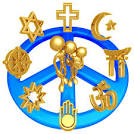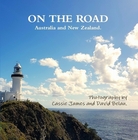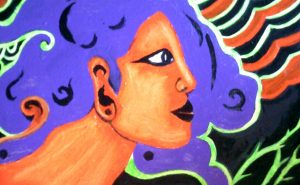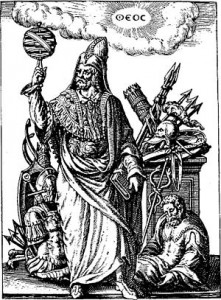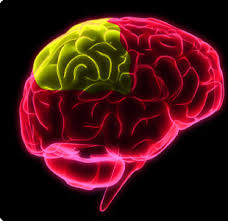
Trauma and the Social Movements.
My own experiences in the social movements in the 1960s were dramatic, and they made a break with the middle-class mediocrity that was the bane of the would be intellectual who sought the utopian idea of a knowledge equality. The social movements also provided first-hand experience of how most groups serve as an object for the introjection of the ego into that of the leader or group. This leads to false consciousness and is especially prevalent amongst the disenchanted and those who were suffering trauma. Social movements appeased the deflated spirit of the poor and emotionally needy and the mass gatherings were an escape for the angry and the confused. As Freud described, individuals transfer personal trauma onto the object as a perceived panacea for pain, but it offers only temporary relief. Internal trauma cannot be treated with distance and repressed trauma will manifest in a host of other problems, the source of which are often hard to detect.
The Second World War produced a generation of rebels whose actions were based on repressed trauma. The Civil Rights movement, feminism and gay rights have all been an inadvertent attempt to break free from personal and intergenerational trauma.
Philosophers have approached the problem of trauma from many different angles. Many have sought solace in conscious awareness, but conscious awareness reminds us that despite our material circumstances, living is never easy, yet, it is also very hard to die. This prompted the philosopher David Benatar to ask the question: If life and death are so hard, is it wrong to reproduce? [1] None of us ask to be born and many of us see life as a gift; but is the gift of life a delusion? Further, might this delusion be underscoring a lot of trauma?
Benatar, is an anti-natalist who believes that having children is morally wrong. This is, without doubt, a difficult question since evolution has provided humans with all the drives to proliferate the species. Well before Benatar published his book the psychoanalyst Otto Rank published a volume called the Trauma of Birth in which he described the whole process of birthing as traumatic leaving the child with serious, but largely repressed, psychological problems.
Environmental and social circumstances often prevent adequate bonding and the result can be serious mental impairments or difficulties, but much depends, not on the experiences, but how the individual deals with them. Some people have more resilience than others.
Correlations.
There has been a significant philosophical and medical divide between the definitions of mental dysfunction and its correlation with trauma. Mental illness carries an insidious social stigma. On the other hand, trauma is seen as something separate from the mind and more in terms of a misadventure, despite its psychological effects. Moreover, the aetiology of generational trauma as a cause of mental illness has received little efficacy in the realms of modern diagnostics. Nonetheless, trauma can be seen as organic in individual outcomes while running through families with no identifiable genetic markers, so what is trauma? How do we define trauma? How is society and the family implicated in ongoing trauma? Further, how can trauma shape our lives?
What is Trauma.
The word ‘trauma’ conveys an extreme condition of immediate pain and urgency, yet, many other names can be attributed to the condition. Some descriptions of trauma simultaneously describe psychiatric conditions, such as depression, stress, neuroses or psychoses, an accident and/or a brain injury, a loss of job or income, a death of a loved one, to name only a few examples. At least one of these will be implicated in trauma, yet, they are spoken of differently, or given a softer more individual perspective. This can serve to undermine and confuse the issues of trauma, especially when it is complex trauma, that is when trauma has a long and arduous history. It is often complex trauma that draws people to the social movements where like-mindedness depends on the complexity of traumas.
Complex trauma is said to result from repetitive, prolonged traumatic events, often unintended or inflicted discursively via the perpetrators own history of experiences. In families, work or the institutional setting, trauma can be inbuilt into the dynamics of the establishment. Embedded trauma is common place in the military and conversely the military often attracts victims of trauma. Complex post-traumatic stress disorder (CPTSD) is generally associated with military action, but this view has been extended to include intimate partner violence (unwanted and painful sexual acts) bondage, kidnap, hostages, forced servitude, slaves, sweatshop workers, prisoners of war, concentration camp survivors, and defectors of cults or cult-like organizations. In other words, situations where people feel captivity and entrapment can lead to symptoms of trauma; these include prolonged feelings of terror, worthlessness, helplessness, and deformation of one’s identity and sense of self.[2]
The Civil Rights movements identified the entrapment of people with racial differences. For radical feminists the experience within the marriage and family setting was generally viewed as oppressive and a form of entrapment. For Marxists the burden of intense labour for little return was viewed in the same idiom as slavery, bondage and entrapment, but this does not answer the questions on original trauma.
First let us look at a list of trauma symptoms.
Persistent sadness, anxiousness or “empty” mood
- Severe mood swings
- Frustration, irritability, restlessness, anger
- Feelings of hopelessness and/or helplessness
- Guilt, shame, worthlessness
- Low self-esteem
- Numbness, emptiness
- Exhaustion
- Inability to be comforted
- Trouble bonding with the baby
- Feeling inadequate in taking care of the baby
- Lack of interest or pleasure in usual activities
- Low or no energy
- Low libido
- Changes in appetite
- Fatigue, decreased energy and motivation
- Poor self-care
- Social withdrawal
- Insomnia or excessive sleep
- Diminished ability to make decisions and think clearly
- Lack of concentration and poor memory
- Fear that you can not care the baby or fear of the baby
- Worry about harming self, baby, or partner [3]
Trauma and Birth.
About 15% of women experience depression around childbirth. Postpartum psychosis occurs in about 1–2 per thousand women following childbirth. Postpartum depression is estimated to affect 1% to 26% fathers if new fathers. Postpartum psychosis is one of the leading causes of the murder of children less than one year of age, which occurs in about 8 per 100,000 births in the United States. [4]
In the 1960s and 1970s Leonard Orr established a movement arguing against the medicalization and pathologizing of birth practices. this followed a whole cadre of psychologists, therapists and writers who turned their attention away from orthodox medicine and towards personal growth. The psychologist Gay Hendricks became widely known as a writer and practitioner in the field of personal growth, relationships, and body intelligence, all of which were designed to enhance human relationships through the development of conscious breathing. People were given various breathing exercises which helped to control not just the breath, but also the mind. After receiving his Ph.D. in psychology from Stanford University in 1974, Gay began teaching at the University of Colorado. He spent 21 years at the University of Colorado and became a Full Professor in the Counselling Psychology Department while founding The Hendricks Institute.[5]
The new birthing and re-birthing movement gave rise to a number of other prominent personal development advocates, perhaps one of the best know would be Louise Hay who recounted her life story in an interview with Mark Oppenheimer of the New York Times in May 2008. In it, Hay stated that she was born in Los Angeles to a poor mother who remarried Louise’s violent stepfather, whereby she and her mother were victims of constant physical abuse. According to Hay, when she was about 5, she was raped by a neighbour. At 15, she dropped out of high school without a diploma, became pregnant and, on her 16th birthday, gave up her newborn baby girl for adoption. She then moved to Chicago, where she worked in low-paying jobs. In 1950, she moved to New York, she changed her name and began a career as a fashion model. She achieved success and in 1954 and married the English businessman Andrew Hay who after 14 years of marriage left her for another woman. Hay was devastated and turned to the First Church of Religious Science, which taught her the transformative power of thought.
Hay revealed that here she studied the New Thought works of authors like Florence Scovel Shinn, who claimed that positive thinking could change peoples’ material circumstances, and the Religious Science founder Ernest Holmes, who taught that positive thinking could heal the body. [6]
The New Thought movement was a social and philosophical movement which developed in the United States in the 19th century. It was considered by many to have been derived from the unpublished writings of Phineas Quimby. Phineas Parkhurst Quimby (1802–1866) was an American spiritual teacher, a philosopher, healer, and inventor, who resided in Belfast, Maine. Quimby was one of seven children and the son of a blacksmith. He received little formal education and suffered tuberculosis in his youth and was prescribed calomel by his doctor. Instead of curing his sickness, the calomel rotted his teeth, and Quimby began experimenting with his own ideas for a cure and found that intense excitement alleviated his pain for brief periods of time, and became interested in the mind’s ability to affect the body.
William James, in The Varieties of Religious Experience, described New Thought as follows:
…for the sake of having a brief designation, I will give the title of the “Mind-cure movement.” There are various sects of this “New Thought,” to use another of the names by which it calls itself; but their agreements are so profound that their differences may be neglected for my present purpose, and I will treat the movement, without apology, as if it were a simple thing. It is an optimistic scheme of life, with both a speculative and a practical side. In its gradual development during the last quarter of a century, it has taken up into itself a number of contributory elements, and it must now be reckoned with as a genuine religious power. It has reached the stage, for example, when the demand for its literature is great enough for insincere stuff, mechanically produced for the market, to be to a certain extent supplied by publishers – a phenomenon never observed, I imagine, until a religion has got well past its earliest insecure beginnings.
One of the doctrinal sources of Mind-cure is the four Gospels; another is Emersonianism or New England transcendentalism; another is Berkeleyan idealism; another is spiritism, with its messages of “law” and “progress” and “development”; another the optimistic popular science evolutionism of which I have recently spoken; and, finally, Hinduism has contributed a strain. But the most characteristic feature of the mind-cure movement is an inspiration much more direct. The leaders in this faith have had an intuitive belief in the all-saving power of healthy-minded attitudes as such, in the conquering efficacy of courage, hope, and trust, and a correlative contempt for doubt, fear, worry, and all nervously precautionary states of mind. Their belief has in a general way been corroborated by the practical experience of their disciples; and this experience forms to-day a mass imposing in amount. [7]
In the early 1970s Hay became a Religious Science practitioner. In this role she led people in spoken affirmations, which she believed would cure their illnesses, and she ran workshops and publicly announced that she had cured herself of cervical cancer. In 1976, Hay wrote her first book Heal Your Body, which began as a small pamphlet containing a list of different bodily ailments and their “probable” metaphysical causes. This pamphlet was later enlarged and extended into her book You Can Heal Your Life, published in 1984 and went on to form the basis of the Hay House publishing company, which still exists today.
As yet there has been no proof of an absolute cure for complex and reflexive trauma. There are theories that the answer might lie in lucid dreaming, the state of being aware that you are dreaming and where theoretically one can rewrite the script from trauma to cure.
Dreaming Trauma.
Trauma seriously affects psychological and biological development. There have been many studies over the past three decades that have helped in our understanding of how the brain works and how trauma hinders the developmental processes. Trauma is a worldwide problem that impacts the health and wellbeing of millions of people and it underscores a lot of negative human behaviour that perpetuates pain on a global scale. Today, the study of psychological trauma is accompanied by a mountain of knowledge about how experience shapes the central nervous system and the formation of our identity, or what we call the ‘self’. The developments in the neurosciences, developmental psychopathology and information processing have contributed to our understanding of how brain function is shaped by experience and that a life, in and of itself, can continually transform the body and mind. The study of trauma has probably been the most important area of study for helping to develop a deeper understanding of the relationship between the emotional, cognitive, social and biological forces that have moulded our human evolution and there is still a long way to go and much more to be explored.
So far, many of the studies on trauma have been around the high incidence of post-traumatic stress disorder (PTSD) and these have been extended into the early experiences in childhood. We know for instance, that certain experiences can put in place psychological narratives that have an impact in physiology and decision making. We know that most experience is automatically processed by the unconscious and later shifted to consciousness. In other words, behaviours generally arise from the stored unconscious memories and what we regard as rational thinking has only a limited influence. We know that most of the problems of traumatised people are caused by replaying the traumatic events of the past. Drugs and therapy have only limited prospects for assisting these pre-conditioned scenarios and there is a high level of relapse from current drug and therapeutic practices. Added to this the suicide rates have soared.
Trauma and the Brain.
Trauma changes our brains and redirects our human evolution. Human consciousness created the world, but two thirds of the human capacity for consciousness is controlled by the intangible and hidden unconscious. When the world is manifesting trauma, the unconscious is where trauma resides. With this knowledge we must address trauma in a different way to most other physical maladies. We must look not just to childhood and infancy, but to the infancy and growth of every nation, group tradition and institution and ask, what is it that has created this trauma? Where is its core? We must examine the influences of previous generational childhoods and their implications for the modern and ongoing psyche. [8]
Intergenerational trauma is not a new problem. The consequences of intergenerational childhood trauma have been known for thousands of years. Warnings about bad times being passed on from generation to generation and many appear in the historical texts, the religious canon and the ancient mythologies. Scientists now have proof that trauma is passed on, but it is often not convenient to dwell on it. The impacts of intergenerational trauma reside in our emotions and how we behave can influence the expression of our DNA, otherwise referred to as our epi-genetics.
Traumatised Genes.
In recent decades, we have come to understand more about the genetic code. We know for instance that information is encoded in genetic material (DNA or RNA sequences), and how this is translated into proteins (amino acid sequences) by living cells. This knowledge has greatly changed the way we deal with mental and physical health issues, but it is not always reflected in the way we deal with social and political problems that also rest upon emotions, fears, feelings and historical trauma experiences. When we add the criterion of epi-genetics to individual events, a deeper analysis is available. To be clear, epi-genetics does not alter the DNA, it influences its expression in lifeworld circumstances. [9]
In 2016 the links between trauma and epigenetics became popularised in Britain when radio program host Sue Armstrong reported on a study of generational trauma in her broadcast on Radio 4 titled All in the Womb (produced by Ruth Evans). The Spectator magazine picked up the story and further detailed how recent developments in the understanding of severe trauma affects both the mind and the body and how these changes were creating physical changes in certain groups. Armstrong noted that people who lived through the Holocaust and who were incarcerated in concentration camps had children who had experiences of trauma metaphorically similar to the experiences of their parents. Evidence for these experiential links was had by comparing the parents’ and their childrens’ DNA during the Human Genome Project. People in prison camps were found to have low levels of the stress hormone cortisol. This is the hormone that the body releases into the bloodstream as we experience panic and fear. It is often referred to as the survival hormone. Scientists found that the descendants of those who have suffered war, violence, incessant fear also have lower levels of cortisol than average. Hence, it was determined that certain projections could be made based on our understanding of these generational legacies. [10]
A study by Dr. Rachel Yehuda, director of Mount Sinai’s Traumatic Stress Studies Division examined the DNA of Holocaust survivors and their children and found similar variations from the norm in both generations for the gene associated with depression and anxiety disorders. Although the study involved just thirty Holocaust survivors and their offspring, the findings implied that children of Holocaust survivor parents who experienced profound stress were more likely to pass on stress and anxiety disorders to their children. The pattern is known as an epigenetic change because it affects the chemical marker for the gene rather than the gene itself, albeit with attachments to new realities, scenarios and circumstances. [11] The question then arises, what might happen to these offspring when they are faced trauma in their own lives? Case studies revealed that the impact of past traumas experienced by parents could unwittingly have a direct influence on current traumas leading to the exacerbation of personal traumas and more distress.
Researcher Ilany Kogan describes two mechanisms by which the generational transmission of trauma occurs, first is where the child’s unconscious introjection and assimilation of the damaged parent’s self-images occurs through interaction with that parent, which then leads to the loss of the child’s separate sense of self and an inability to differentiate between the self and the damaged parent. Second, is where the parent forces aspects of him or herself onto the child, consciously or unconsciously. [12] Kogan goes on to say:
Life threatening reality does not reactivate only a simple recollection of traumatic events, but also reactivates in the children the mental representation…that they share with their parents. These include real events of a traumatic nature, conscious and unconscious fantasies regarding these events, intense feelings…and defences against unacceptable feelings such as shame, guilt or aggression. [13]
Two examples are offered by Kogan, one where a female high school teacher decides to demonstrate against Israel’s treatment of the Palestinians, which Kogan suggests was a way of unconsciously mitigating the burden of guilt she felt towards her parents when her needs overshadowed the pain experienced by her mother and father, this also became transferred to other close relationships making them difficult to sustain.
The second example describes a man who sought counselling to control his anger. His father, also a Holocaust survivor, had committed suicide. Here the client projected his anger onto others having introjected the pain of his father’s experience as a Holocaust victim.[14]
Findings suggests that profound stress in the older generation translated into an adaptation that passed on to their offspring. Scientists have long-known that parents pass genetic traits down to their children, research also suggests that life experiences can also produce chemical effects in DNA which can impact on behaviours and lives.
Does History Repeat Itself?
Our experiences, and those of our forebears, are never gone, even if they have been forgotten. They become a part of us, a molecular residue holding fast to our genetic scaffolding.
Intergenerational transference is the subject of Lost in Transmission: Studies of Trauma Across Generation edited by M. Gerard Fromm (2012). A collection of essays on traumatic transmission builds on the idea that what human beings cannot contain of their experience—what has been traumatically overwhelming, unbearable, unthinkable—falls out of social discourse, but very often on to and into the next generation as an affective sensitivity or a chaotic urgency. [15]
The transmission of trauma may be particular to a given family suffering a loss, such as the death of an infant, or it can be a shared response to societal trauma. Maurice De Witt, a sidewalk Santa on Fifth Avenue noticed a marked change in behaviour the holiday season following 9/11 when parents would not “let the hands of their children go. The kids sense that. It’s like water seeping down, and the kids can feel it… There is an anxiety, but the kids can’t make the connections.”[16]
Psychic legacies are often passed on through unconscious cues or affective messages that flow between child and adult. Sometimes anxiety falls from one generation to the next through stories told to children by parents, friends or teachers. The psycho-historian Peter Loewenberg recalls the oral tradition of his parents who lived through the hunger years in Germany during the First World War when the physical health and stature of a generation was stunted due to prolonged malnutrition. According to their stories, a once-a-year indulgence was an orange segmented and apportioned among the entire family. Loewenberg further identifies a causal chain between physical privations of the German people during WWI, which culminated in the Great Depression (1929), and the Nazi appeal to children of Central Europe. To what extent did “the passive experiences of childhood starvation” lead to a reversal and fantasied “undoing” through the hunger regime and cruelty of the concentration camps?[17] This is an interesting question because society blames the horrors of War on those who are directly involved and can be held accountable for their atrocities; but as Loewenberg suggests we need to asked who (or what) else is involved?
Transgenerational transmissions take on life of their own. The transmissions appear in our dreams and hallucinations (a form of dreaming) as well as in daily life through family influences. Discovering transmission means coming to know the greater narrative, the one from the preceding generation. It requires close listening to the stories of our parents and grandparents, with special attention to the social and historical milieu in which they lived – especially when there has been military and economic turmoil. The emotional ties between child and ancestors are essential to the development of values. These bonds often determine the answers to myriad questions such as: “Who am I?” “Who am I to my family?” “Who can ‘we’ trust” and who are our enemies?” “What ties me to my family?” And, most importantly, “of these ties, which do I reject and which to I keep?”[18]
Birth, Depression and Trauma.
The psychoanalyst Otto Rank argued that birth itself is traumatic because it is an interruption of blissful uterine life from which people spend the rest of their lives trying to recover. Rank believed that the birth trauma, and the fantasy of returning to the mother’s womb, are far more important than subsequent traumas and fantasies.[19] Arthur Janov argued that neurosis is caused by the repressed pain of childhood trauma. Janov’s primal therapy was used to re-experience childhood pain so it could be felt rather than exist in conceptual memories. This was believed to bring about a breakthrough and better integration into the real world. Primal therapy became very influential during the early 1970s, after the publication of Janov’s first book, The Primal Scream. [20]
Frédérick Leboyer believed babies were the forgotten subjects in the birth process. The French obstetrician and author, best known for his 1974 book, Birth Without Violence, popularized gentle birthing techniques, in particular, the practice of immersing new born infants in a small tub of warm water — known as a ‘’Leboyer bath’’. He believed the bath would help ease the transition from the womb to the outside world. He also advocated low lighting, less noise and a warm room to limit the supposed shock of birth. [21]
Trauma and Depression.
One of the most common mental ailments today is depression, but what if depression was not an illness, it was solely a response to trauma? The Anti-Psychiatry Movement of the 1960s and in particular R.D. Liang attempted to link all mental illness to various expectations and inequities within society said to cause anxiety and trauma. All mental illness has strong components of fear and anxiety, which in turn alters the brain chemistry, whereby it can cause long term damage to the brain’s neurological structure. The brain also has plasticity and in some cases the brain can repair itself or supplement the damage by using other areas of capacity.
Symbolism.
Trauma has its own symbolism. Freud saw the formation of symbols as something created in the context of an internal narrative, which is replayed to ourselves as part of our inner world. We might call this our inner voice. Reality, or the events of the external world can only be fully grasped when the inner world and the outer world are working together. Extreme trauma causes this continuity to be disrupted. Trauma can cause too much focus on the inner world and then manifest it in outward pain. The inner world represents our needs, yet to be experienced. The traumatised individual sees the inner world as an emptiness with only terror in the abyss, this can have a profound impact on the ego and self-esteem.
In psychoanalysis symbolism is associated with ego formation. Sigmund Freud described ego formation in his Introductory Lectures on Psychoanalysis (1916-1917). Freud wrote:
There can be no doubt that the source [of the fantasies] lie in the instincts; but it still has to be explained why the same fantasies with the same content are created on every occasion. I am prepared with an answer that I know will seem daring to you. I believe that…primal fantasies, and no doubt a few others as well, are a phylogenetic endowment. [22]
Freud’s suggestion that primal fantasies are a residue of specific memories of prehistoric experiences follows Freud’s interest in archetypes, which he withdrew from after his split with partner Carl Jung. It was Jung who developed the notion of archetypes as an influential component in human behaviour. Laplanehe and Pontalis believe that all the so-called primal fantasies relate to the origins and that like collective myths they claim to provide a representation of and a ‘’solution’’ to whatever constitutes an enigma for the child. [23]
According to Melanie Klein not only does symbolism come to be the foundation of all fantasy and sublimation, but more than that, it is the basis of the subject’s relation to the outside world and to reality in general.[24] For Klein trauma is associated with an internal rage that serves as an antidote for the preservation of the good object. Klein argued that the introjection and identification with a stable good object (good parent or caregiver) is crucial to the ego’s construction. Kleinian theory suggests the introjection of and identification with a stable good object is crucial to the ego’s capacity to cohere and integrate experience. Damaged or dead internal objects (sometimes referred to as the dead mother) cause enormous anxiety and can lead to traumatic personality disintegration [25] (My emphasis).
Introjection, Trauma and Loss of Balance.
The loss of personal judgement is a common feature in introjection. Hence, introjection can be present in any relationship where people manifest behaviour that they would normally regard as unacceptable or out of character, but which feels necessary to complete their make-up, especially at a time of trauma or chaos. Introjection also has a part to play in contagion where fringe cultures and the existence of groupies join together to follow a hero or icon and where behaviour can become erratic, emotional and problematic because introjection overwhelms everything else. For instance, if a young girl, idealises a pop star she can devote her entire existence to fantasising and following the life of the star to the detriment of other important tasks and relationships. What we call peer group pressure is often a case of introjecting the ideas of the societal group and/or its top dog, into the personality of the individual.
Introjection can be viewed an acceptable form of behaviour in a society based on peer group influences. Examples appear everywhere in daily life and are often hailed as strengths not weaknesses. Some children are also believed to use introjection as a protective strategy when relationships with parents break down or the child suffers neglect. Cases of neglect frequently occur because the parent has introjected harmful behaviours and fears from their parents, grandparents or relatives, then subsequently onto their own children in a transgenerational schemer.
Childhood experiences that have their roots in introjection can include, but are not limited to, bullying, physical and sexual abuse, loss of a family member or friend, and many more. Experiences like these can change a person’s physical, social and emotional life. Memories of these events usually linger in a person’s mind for years and become almost impossible to eradicate. In contrast, small incidents can be blown up into proportions equal to the fear that is increasingly generated when the problem has not been dealt with.
Narcissism
A child exposed to narcissistic parent can suffer extreme trauma, which in turn can be passed on to then next generation. When parents experience negative thoughts these can be subliminally played back to children resulting in feelings of being worthless making it very hard for the growing child to cope in the world. The actions and outcomes of negative thinking can be the result of feelings and emotions that are quite unconscious. A socially isolated parent will often introject their solitude onto the child so the child also remains alone and isolated from the mainstream. Without social contact the child has no point of reference and s/he can lapse into a state of not caring for themselves or others; this can also become a case of trauma driven morbid depression.
In The Sane Society (1955), Fromm wrote,
An unhealthy society is one which creates mutual hostility [and] distrust, which transforms man into an instrument of use and exploitation for others, which deprives him of a sense of self, except inasmuch as he submits to others or becomes an automaton… Yet many psychiatrists and psychologists refuse to entertain the idea that society as a whole may be lacking in sanity. They hold that the problem of mental health in a society is only that of the number of ‘unadjusted’ individuals, and not of a possible unadjustment of the culture itself. [26]
Conclusion.
Studies show that all forms of abuse in childhood are likely to result in drugs and alcohol abuse, aggressive and anti-social behaviour and sometimes suicide, but rarely has abuse in one generation been linked to trauma in the previous generations. It would appear from the studies on the offspring of Holocaust survivors that abuse is caused by previous trauma and it becomes a vicious and ongoing cycle. The individual can become anxious, anti-social and typically fearing any kind of deep relationship. Abuse is everywhere in society and much of it goes unrecorded or unexplained.
Broken connections stem beyond those of our maternal parents and caregivers? Most people need a sense of where they come from in order to answer some of life’s important questions. These subtle omissions of intergenerational knowledge can determine the way we feel and what we project onto the society we live in.
[1] David Benatar 2015, Debating Procreation Oxford, Oxford University Press Chapter 1.
[2] Herman, Judith Lewis (1992). Trauma and Recovery: The Aftermath of Violence. New York: Basic Books, pp ix, 268.
[3] https://en.wikipedia.org/wiki/Postpartum_depression
[4] Ibid.
[5] Hendricks co-founded The Spiritual Cinema Circle with his wife and producer Stephen Simon, was Executive Producer for the film Zen Noir (2004). He served as producer and writer on the Louise Hay movie, You Can Heal Your Life. In 2011, he partnered with writer Tinker Lindsey to begin the Tenzing Zorbu mystery series, with titles such as The First Rule of Ten and The Second Rule of Ten, which illustrate emotional and spiritual challenges in the life of a fictional ex-monk private detective. A short biopic was made of his life for Polish television, he was portrayed by Canadian actor, Jon Cubbon.
[6] https://www.google.com.au/?gws_rd=ssl#q=louise+hay
[7] https://en.wikipedia.org/wiki/New_Thought
[8] Ibid.
[9] Ibid
[10] https://www.spectator.co.uk/2016/04/how-trauma-is-passed-on-down-through-the-e-generations-in- our-dna
[11] Ibid.
[12] IIany Kogan 2012 The Second Generation in the Shadow of Terror Lost in Transmission: Studies of Trauma Across Generations. Introduction, London, Karnac Publishing. p6.
[13] Ibid.
[14] Ibid.
[16] Ibid
[17] Ibid
[18] Ibid
[19] Otto Rank
[20] Arthur Janov
[21] Reynolds, Concise Encyclopedia of Special Education, 138]
[22] Andrew Samuels 1986 Jung and the Post Jungians. London Routledge.
[23] Ibid.
[24] ———- 2012 The Second Generation in the Shadow of Terror Lost in Transmission: Studies of Trauma Across Generations. Introduction, London, Karnac Publishing. p52
[25] Ibid.
[26] The Sane Society E Fromm


